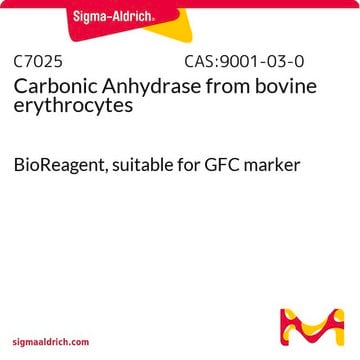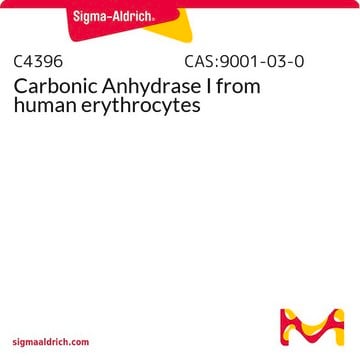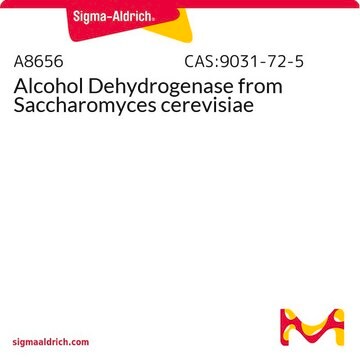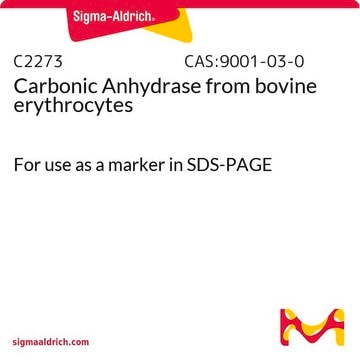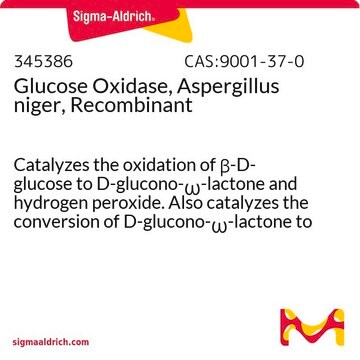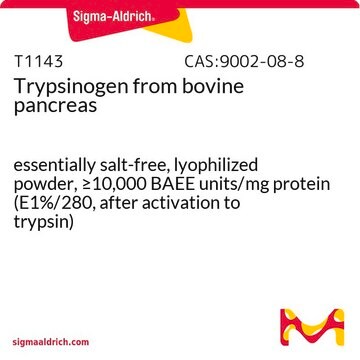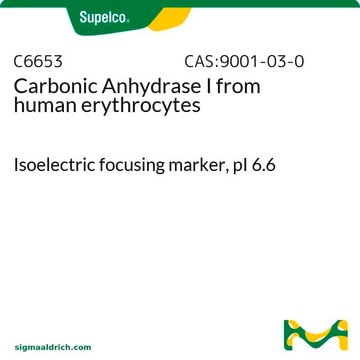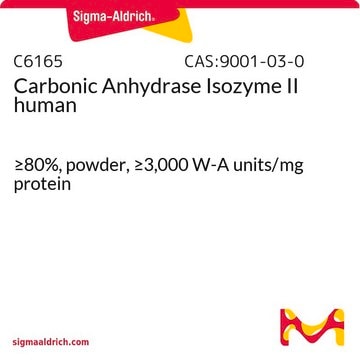C2624
Carbonic Anhydrase from bovine erythrocytes
≥95% (SDS-PAGE), specific activity ≥3,500 W-A units/mg protein, lyophilized powder
Synonym(s):
Carbonic Anhydrase from bovine erythrocytes, Carbonate Dehydratase, Carbonate Hydrolyase
About This Item
Recommended Products
biological source
bovine erythrocytes
Assay
≥75% protein basis (biuret)
≥95% (SDS-PAGE)
form
lyophilized powder
specific activity
≥3,500 W-A units/mg protein
solubility
deionized water: >10 mg/mL
storage temp.
2-8°C
Looking for similar products? Visit Product Comparison Guide
Application
Biochem/physiol Actions
Unit Definition
Signal Word
Danger
Hazard Statements
Precautionary Statements
Hazard Classifications
Resp. Sens. 1
Storage Class Code
11 - Combustible Solids
WGK
WGK 3
Flash Point(F)
Not applicable
Flash Point(C)
Not applicable
Regulatory Listings
Regulatory Listings are mainly provided for chemical products. Only limited information can be provided here for non-chemical products. No entry means none of the components are listed. It is the user’s obligation to ensure the safe and legal use of the product.
EU REACH Annex XVII (Restriction List)
Certificates of Analysis (COA)
Search for Certificates of Analysis (COA) by entering the products Lot/Batch Number. Lot and Batch Numbers can be found on a product’s label following the words ‘Lot’ or ‘Batch’.
Already Own This Product?
Find documentation for the products that you have recently purchased in the Document Library.
Customers Also Viewed
Our team of scientists has experience in all areas of research including Life Science, Material Science, Chemical Synthesis, Chromatography, Analytical and many others.
Contact Technical Service
